Furoshiki are traditional Japanese wrapping cloths that have been used for centuries. In this article, we explain everything you need to know about them, why you ought to get one, and where you can buy one.
What Is a Furoshiki?
Furoshiki refers to traditional Japanese wrapping cloth. As well as being highly decorative, furoshiki are incredibly practical as they can be used in many different ways. One of its most common uses is wrapping objects of all shapes and sizes, but it can also be fashioned into bags, put on display as a wall hanging, or even worn as a piece of clothing!
The History of Furoshiki
Furoshiki have been used in Japan for centuries in some form or another, with records showing their use as far back as the Nara Period (710-794). At the time, they were simply known as “tsutsumi,” which literally means “wrapping” in Japanese.
It wasn’t until the Muromachi Period (1336-1573) when the term “furoshiki” began to be associated with these wrapping cloths. High-ranking people such as feudal lords started to use them as a way to protect their clothes whilst visiting public baths. In Japanese, “furo” means bath and “shiki” means to spread, which is indeed what they did.
Furoshiki finally began to be used by the commoners once Japan hit the Edo Period (1603-1867). During this era, public baths became more accessible to the general populace, and it was there that they realized furoshiki were an excellent way of carrying all sorts of bath goods. As time passed, people saw even more uses for the furoshiki and started creating them in all kinds of sizes, eventually leading to the furoshiki we love and use today.
Why Use a Furoshiki?

Photo credit: PIXTA
1) The beautiful design of furoshiki adds an extra layer of decoration when used to wrap gifts. It is far easier to unwrap furoshiki and very difficult to tear it, so once the gift is unwrapped, you can reuse the furoshiki however you like. It’s practically two gifts in one!
2) Furoshiki can be tied any way you want, including into a shopping bag, making them a super eco-friendly way to transport goods. Whether you need something to wrap your bento box in or looking to carry a few bottles, furoshiki have you covered.
3) Since you can tie furoshiki in all sorts of ways, it is a great way to protect delicate items, especially if you plan to transport or store them. Not only do they keep out the light and dirt, but you can tie them in a way that perfectly fits the item’s form, ensuring the item doesn’t get jostled around when it has to be moved.
What Is the Difference Between Furoshiki and Tenugui?

Photo credit: PIXTA
Tenugui are thin, rectangular towels normally made from cotton. The shape alone is quite different from a furoshiki, which is typically a square piece of cloth.
Rather than being used to wrap objects like furoshiki, tenugui are primarily used for drying your hands, as a dishcloth, or wrapped around the neck or head to wipe off sweat.
They do share some similarities. Like furoshiki, tenugui are also often highly decorative, featuring colorful dyed patterns. They are sometimes also designed to be used as wall hangings.
Can I Use Any Fabric for Furoshiki?
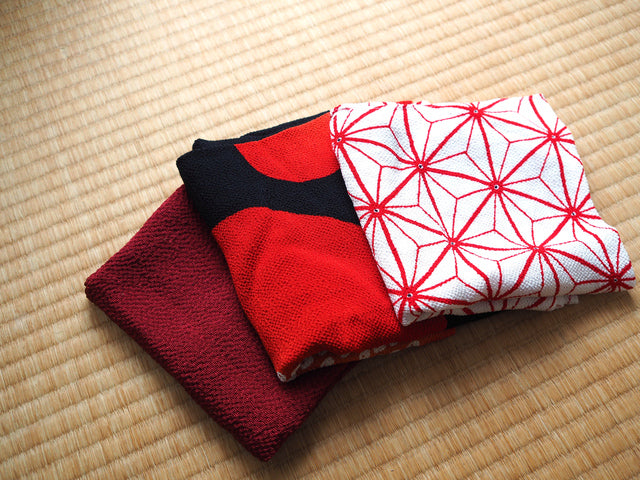
Photo credit: PIXTA
Furoshiki can be made of a variety of different materials, including cotton, silk, nylon, or polyester. Which fabric you choose depends on what it will primarily be used for. Furoshiki made from silk will be of the highest quality and perfect as a gift, while a versatile fabric such as cotton is not only often cheaper, but it can be used in any number of practical ways.
Some people even use scarves as furoshiki! While there is no rule that says that they have to be a specific shape, the vast majority of furoshiki do tend to be square shaped. If your scarf is of a different shape, it might need to be folded differently than a regular furoshiki.
How Big Does a Furoshiki Need to Be?
The general rule of thumb is to use a furoshiki that is three times longer than the longest edge of the item you are wrapping.
There are ten common sizes for furoshiki, each suiting a number of different uses. The most popular sizes of furoshiki are 18 x 18 inches or the larger size of 28 x 28 inches.
If you are wrapping a single smaller package, then you’ll obviously want to use a smaller furoshiki. If you plan to fashion a furoshiki into a bag, then a larger sized fabric will be needed in order to hold a variety of different items.
Are Furoshiki Waterproof?
In most cases, furoshiki are made from materials that are not waterproof, such as silk, cotton, or nylon. However, some modern furoshiki are made from specially adapted waterproof materials.
We happen to stock some waterproof furoshiki in our store. They’ll protect your goods, come rain or shine!
Should You Give Furoshiki Back When Receiving a Gift?
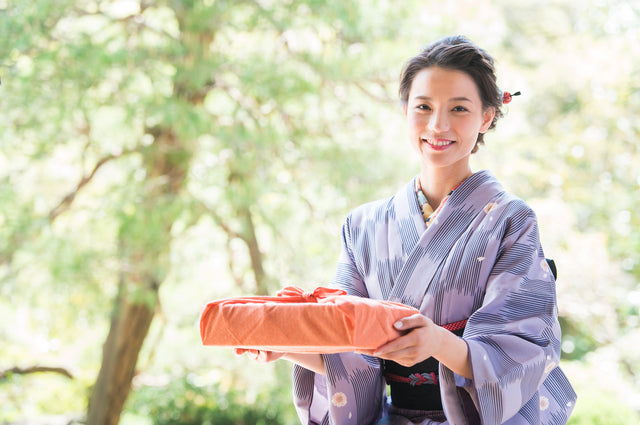
Photo credit: PIXTA
Traditionally, if you have received a gift that has been wrapped inside a furoshiki, it is expected that the furoshiki will be returned to the person who has given the gift. A common practice is for the person giving the gift to unwrap the furoshiki first before offering the contents.
However, there is no written rule. Plenty of people give the furoshiki wrapped around the present as part of the gift!
3 Best Furoshiki to Buy at BECOS
Now that you know more about furoshiki, why not purchase your very own?
At BECOS, we sell authentic handcrafted Japanese goods made by artisans from across Japan. They are selected by our excellent team of buyers, with a focus on quality over quantity. By purchasing from BECOS, not only are you supporting local craftspeople, but you’ll obtain a furoshiki that you can use for years to come.
HANA (PLAIN WEAVE 96CM) FUROSHIKI | ASAKURA SENPU
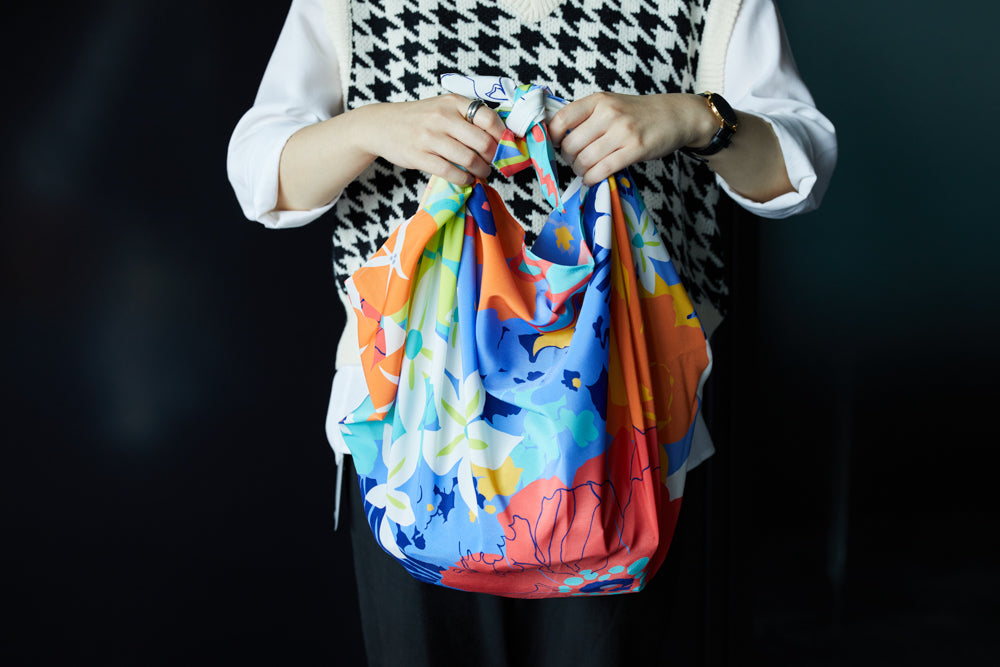
Asakura Senpu was founded in Gunma Prefecture in 1892 as a dyeing and textile company. Today, the company blends traditional designs with modern technology to create a variety of gorgeous and colorful fabrics that are completely waterproof. Their innovative water repellent furoshiki have received recognition and acclaim from many prestigious design competitions in Japan and overseas, including the Good Design Awards and the Red Dot Design Awards.
Measuring at 38 x 38 inches (96 x 96 cm), this furoshiki is large enough to be used in a variety of ways, such as wrapping lunch boxes, carrying groceries, or as a decorative yet durable tablecloth. The polyester fabric is so water repellent that it can even be used to hold water like a bucket!
They have a wide variety of designs for their water repellent furoshiki, which you can check out on the BECOS online store.
KEMONODE WHITE (L) FUROSHIKI | MORPHOSHERE
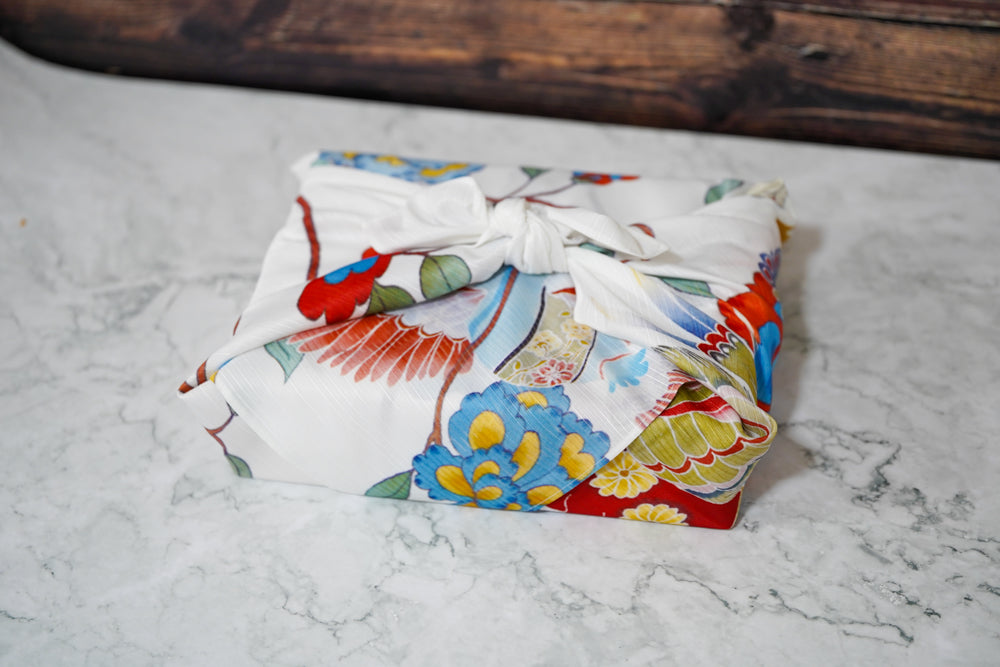
Established in Kyoto in 2019, Morphosphere fuses two traditional Japanese crafts: furoshiki and a dyeing technique called “yuzen” that dates from the 17th century, once commonly used to make elaborate and decorative kimono.
This particular furoshiki features a type of traditional Japanese pattern known as “kissho mon” that represents good luck and prosperity. It is made of high-quality shantung polyester, a durable fabric which feels very similar to silk. Apart from using it to wrap items, this furoshiki is lovely enough to be used as a decorative wall hanging.
Morphosphere has a couple other patterns for this style of furoshiki that you can view on the BECOS online store.
SQUARE RED FUROSHIKI | WASHINO PRINT FACTORY
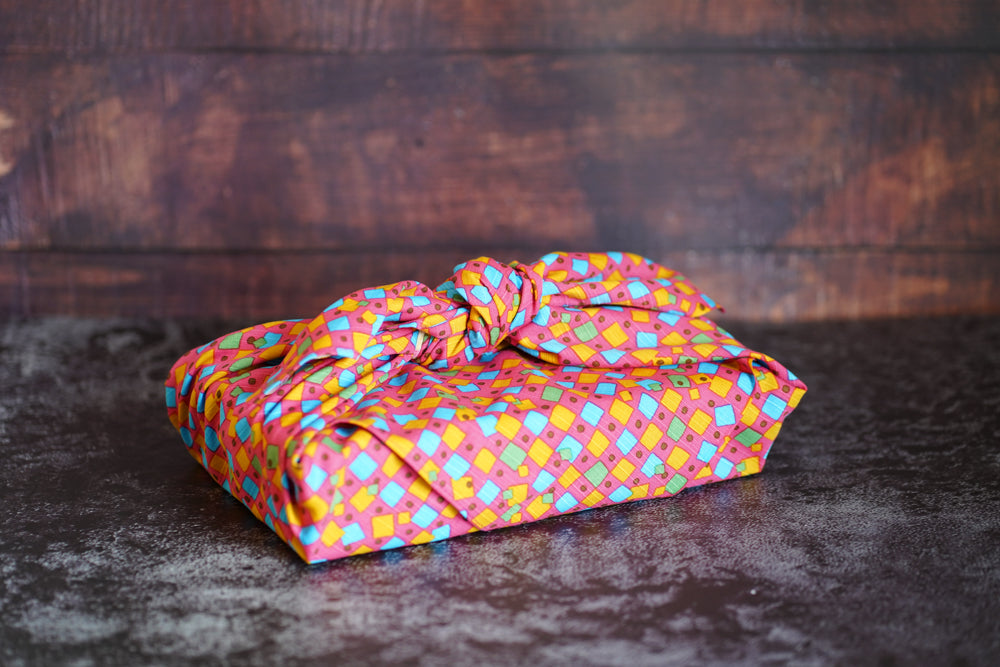
Established in Kyoto in 1930, Washino Print Factory’s furoshiki are printed in the traditional way by hand. This brings out an incredible depth to the furoshiki’s colors, something that cannot be replicated by modern inkjet printers.
This furoshiki features a geometric square pattern that was designed to match and compliment both Japanese and Western clothing styles. The large size makes it an excellent choice for those looking for a furoshiki to wrap bigger items or tie into a bag for carrying groceries or shopping.
Though Washino Print Factory is most known for its hand printed umbrellas, it has plenty of other furoshiki designs available for sale, which you can find on the BECOS online store.
Didn't see the perfect furoshiki above? We have many more furoshiki options on our furoshiki collection page. Be sure to take a look.
